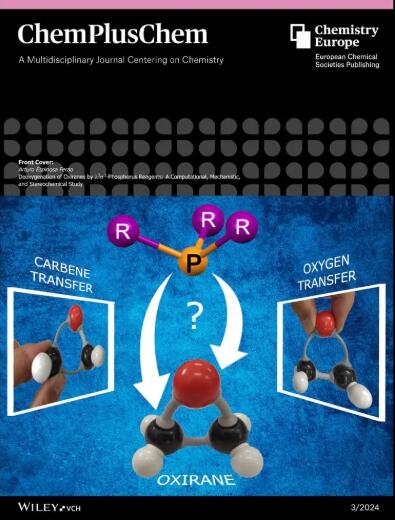溶液燃烧生成的小板铈催化剂及掺铁对二氧化碳合成碳酸二甲酯的影响
IF 3
4区 化学
Q2 CHEMISTRY, MULTIDISCIPLINARY
引用次数: 0
摘要
溶液燃烧法(SC)因其简便易行、省时省力、成本效益高、可扩展性强和生态友好等优点,仍然是从水介质中生产结晶纳米粉体的最有前途的合成策略之一。在这项工作中,我们选择了这种方法来获得异性铈基纳米粒子,并将其用作直接合成碳酸二甲酯的催化剂。研究了来自 SC 的铈和掺铁铈(CeO2-SC、Ce0.9Fe0.1O2-SC)与通过水热法(HT)获得的铈纳米棒(CeO2-HT、Ce0.9Fe0.1O2-HT)的催化性能,后者是文献中研究最多的体系之一。事实上,通过水热法获得的铈纳米粒子具有高结晶性、板状、马赛克状排列,与掺杂铁的样品相比,未掺杂样品的结晶尺寸更小(≈6 nm 对 ≈17 nm),比表面积更大(80 m2 g-1 对 26 m2 g-1)。虽然所有样品都呈现出异相形态,有利于特定晶面的暴露,但 HT 样品由于氧空位浓度较高,强碱和强酸位点较少,因此性能更好。本文章由计算机程序翻译,如有差异,请以英文原文为准。
Platelet Ceria Catalysts from Solution Combustion and Effect of Iron Doping for Synthesis of Dimethyl Carbonate from CO2
Solution combustion (SC) remains among the most promising synthetic strategies for the production of crystalline nanopowders from an aqueous medium, due to its easiness, time and cost-effectiveness, scalability and eco-friendliness. In this work, this method was selected to obtain anisometric ceria-based nanoparticles applied as catalysts for the direct synthesis of dimethyl carbonate. The catalytic performances were studied for the ceria and Fe-doped ceria from SC (CeO2-SC, Ce0.9Fe0.1O2-SC) in comparison with the ceria nanorods (CeO2-HT, Ce0.9Fe0.1O2-HT) obtained by hydrothermal (HT) method, one of the most studied systems in the literature. Indeed, the ceria nanoparticles obtained by SC were found to be highly crystalline, platelet-shaped, arranged in a mosaic-like assembly and with smaller crystallite size (≈6 nm vs. ≈17 nm) and higher surface area (80 m2 g-1vs. 26 m2 g-1) for the undoped sample with respect to the Fe-doped counterpart. Although all samples exhibit an anisometric morphology that should favor the exposition of specific crystalline planes, HT-samples showed better performances due to higher oxygen vacancies concentration and lower amount of strong basic and acid sites.
求助全文
通过发布文献求助,成功后即可免费获取论文全文。
去求助
来源期刊

ChemPlusChem
CHEMISTRY, MULTIDISCIPLINARY-
CiteScore
5.90
自引率
0.00%
发文量
200
审稿时长
1 months
期刊介绍:
ChemPlusChem is a peer-reviewed, general chemistry journal that brings readers the very best in multidisciplinary research centering on chemistry. It is published on behalf of Chemistry Europe, an association of 16 European chemical societies.
Fully comprehensive in its scope, ChemPlusChem publishes articles covering new results from at least two different aspects (subfields) of chemistry or one of chemistry and one of another scientific discipline (one chemistry topic plus another one, hence the title ChemPlusChem). All suitable submissions undergo balanced peer review by experts in the field to ensure the highest quality, originality, relevance, significance, and validity.
 求助内容:
求助内容: 应助结果提醒方式:
应助结果提醒方式:


